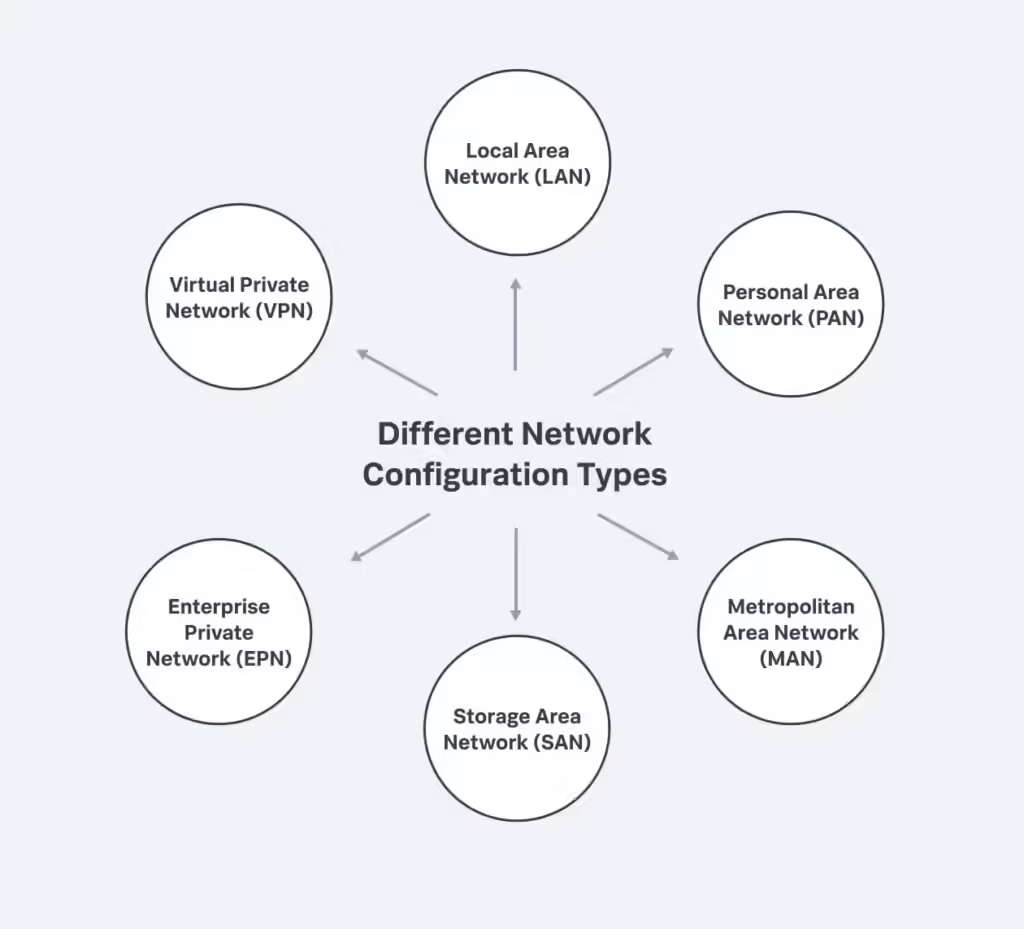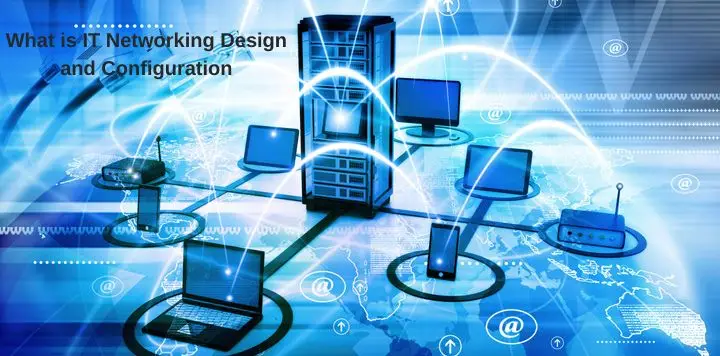Network design includes planning and implementing computer network infrastructure. It includes customizing gadgets, services, and technology to meet individual or organizational needs. It may involve selecting a network’s architecture or topology, selecting the required hardware and software, planning for storing data and management, determining what is needed for an internet connection, and ensuring that all important safety precautions are implemented. The network design should include a company’s immediate requirements while also allowing for future expansion and flexibility.
In this article, we will explore all about IT networking design and configuration, and networking management.
What is IT networking design?
IT Network design is the process of developing an efficient and secure IT infrastructure. It involves the process of planning and designing a network to connect the different devices and systems in an organization to make communication, data exchange, and sharing of other information secure and efficient.
Why is Network Design Important?
As networks grow more crucial to company operations, IT professional’s design choices can have significant repercussions. A network with a thoroughly planned design will operate efficiently. It will be more safe, strong, and troubleshooting, as well as scalable and adaptable to future technology.
Is Network Design The Same as Network Topology?
Although network design includes business procedures and outcomes, network topology describes the design as seen through network layouts, also known as topology maps. There are some examples of network topologies, ring, chain, tree, and mesh. These are all important
How do you Design a Network?
A network is designed in a series of steps that are tailored to an organization’s specific IT networking solutions needs. Below are a few steps you take to design a network:
- Identify the needs and goals.
- Evaluate present infrastructure
- Design a network diagram
- Select hardware and software
- Design the IP Addressing Scheme.
- Build a network security plan.
- Prepare for network support and maintenance.
- Identify the network.
- Evaluate and implement.
Network Design Best Practices
- The simplicity
- The ability to scale
- Replication
- Protection
- Modularity
- Performance Optimisation
- Consistent policies
- Documentation
- Regular Maintenance
- Regular Review
Features of Network Design Solutions
Many network design software have the following functionalities.
- Network Mapping
- Site mapping templates
- Tools for exporting files
- Discovery and Monitoring
- Specialized topologies
- Flowcharts
What is Network Configuration?

Network configuration is the procedure that delivers network settings, guidelines, flows, and controls. Changes to network setup are simpler in an online network since actual network equipment and appliances can be replaced by software, eliminating the need for lengthy manual setup. A centralized configuration supervisor can also be used to automate and oversee network configuration, decreasing manual IT workload and making it easy to
- Maintain a network.
- Make configuration modifications.
- Reinstall the devices.
- Monitor and report data.
Some common network setups involve switch/router configuration, hosting configuration, software and security setup, and network topology, all of these can be handled via rest APIs.
How Can You Check Your Network Configuration?
commands such as ip config (for Windows network configuration) and ifconfig (for Linux network configuration, and on Mac OSX and other Linux-like environments) can be used to see network configuration data and configure network interfaces. Network configuration management or APIs can be utilized to analyze and set up network settings in a centralized software user interface, making it easier to set up, monitor, and manage your network. A network configuration controller allows for automated policy changes and upgrades.
Types of Network Configurations

You may customize your network in a variety of methods, styles, and sizes. These are the 6 most frequent types of network configurations.
- Local Area Network (LAN).LANs are a common network type, particularly in corporations and organizations. It’s a private network solution that can link several devices, making it ideal for business networks.
- Personal Area Network (PAN). PAN is a small net that links a single individual to multiple other networks. For instance, the Bluetooth connection is a PAN.
- Metropolitan Area Network (MAN). MAN is a network system that covers many miles, similar to a higher education institution. Because it enables data to be delivered and received concurrently, it is extremely security fragile.
- Storage Area Network (SAN). A SAN is a local network capable of quickly transferring large amounts of data between servers and processors. As a result, it allows for quick and easy data access and storage.
- Enterprise Private Network (EPN). Organizations typically utilize EPN to safely connect and exchange resources between various servers and regions.
- Virtual Private Network (VPN). This network’s major features include security and privacy. It protects your data while you link to different networks using a private network’s virtual link. As a result, it is suitable for transmitting and receiving sensitive information.
Network Management
Network management is the procedure of managing and tracking your network to keep it working properly. In short, you make use of procedures and instruments to make an extensive variety of network resources readily available to users and services.
How Does Network Management Work?
Network management systems take data from network devices to assess how they perform and behave. It’s tough to do this without delving into the different essential factors that contribute to an effective IT infrastructure. These parts include the following:
- Network Administration: Network managers are responsible for the everyday operation of a network, which includes tracking, fixing problems, and upkeep of network devices. They ensure that the network runs smoothly, consistently, and securely.
- Network Provisioning: This involves setting up and configuring network resources to fulfill the requirements of users or apps. Supply duties involve configuring new devices, providing the bandwidth, and specifying Quality of Service (QoS) characteristics.
- Network Security: Security management is concerned with securing the network from a variety of risks, including unauthorized access, infections, and data leaks. This includes putting in place security policies and protocols including network firewalls, control of access, and systems for detection of intrusions.
- Network Automation: Network automation simplifies managing a network by automating common processes with programs and scripts. The goal is to minimize human involvement while minimizing the chance of errors.
- Network Maintenance: To function properly, networks must be maintained regularly. Maintenance chores may involve upgrading firmware, which is fixing software bugs, and replacing problematic hardware parts for optimal network performance and reliability.
- Network Protocol: Network protocols are regulations and standards that control how devices communicate on a network. Network management entails configuring and upholding those protocols to enable continuous connectivity and data flow.
- Network Analytics: Network analytics is collecting and analyzing data from network devices and infrastructure to identify patterns, detect abnormalities, and improve the performance of networks. Analytics utilities enable operators to make data-driven choices that enhance the network’s overall performance.
Types of Network Management
Network management is divided into five main categories that influence how network systems can be tracked and maintained:
- Fault Management
- Configuration Management
- Performance Management
- Security Management
- Accounting Management
Why is Network Management Important

The benefits of network management are extensive, ensuring that IT networks operate smoothly and efficiently. When done properly, network administration provides numerous benefits to enterprises. The benefits of network management are as below:
- Reduced Downtime
- Improved Performance
- Stronger Security
- Cost Savings
Conclusion:
To conclude, we have explored all about IT network design, configuration, and network management. IT networking design and configuration is the process of planning a network and implementing it to ensure communication and efficient management in a business. It involves the choosing of the right topology, device, and security measures to meet the basic requirements. Effective network management plays an important role in monitoring, maintaining, and optimizing the configuration to ensure performance, security, and reliability. These principles are important to build a scalable and secure IT network infrastructure in Dubai.




